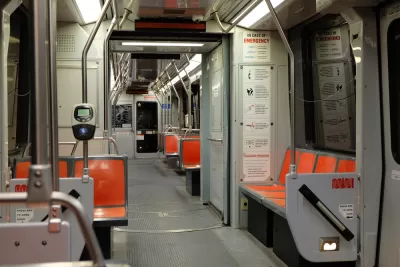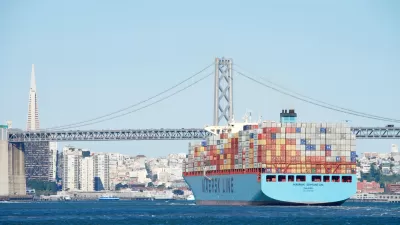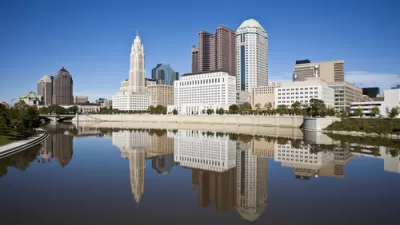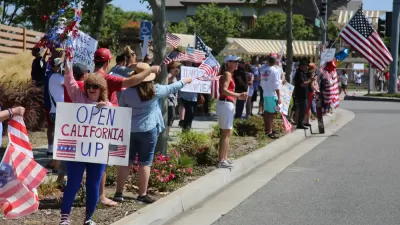The largest state in the country has been ordered to shelter in place.

Gov. Gavin Newsom announced on Thursday evening that he had directed the state Public Health Officer to issue a "stay at home" order to protect residents. The order takes effect immediately and will remain in place "until further notice."
The March 19 executive order [pdf] followed press reports that Gov. Newsom expected that 56 percent of California’s population, over 22 million people, would be infected with COVID-19 over an eight-week period without mitigation efforts.
This Order is being issued to protect the public health of Californians. The California Department of Public Health looks to establish consistency across the state to ensure that we mitigate the impact of COVID-19. Our goal is simple, we want to bend the curve, and to disrupt the spread of the virus.
The actual order [pdf] "to stay home or at their place of residence" was issued by Dr. Sonia Y. Angell, California Department of Public Health Director and State Health Officer.
It follows action that Newsom took last Sunday that requested the closure of bars, reduced occupancy of restaurants, and the self-isolation of seniors aged 65 and older.
However, six Bay Area county public health officers felt that action, which was not in the form of an edict, didn't go far enough, so they issued formal "shelter-in-place" orders affecting 6.7 million residents. By Wednesday, the three remaining Bay Area followed suit, along with neighboring counties to the north and south. And on Thursday, the Los Angeles County Public Health Officer issued a "Safer At Home Order for the Control of COVID-19 [pdf]" affecting over 10 million residents.
All three names—stay at home, shelter in place, and safer at home, are essentially the same. While legal, enforceable orders, they are not "lockdowns," which would require residents to documents upon leaving their homes, as enforced in Italy as well as Wuhan and other cities in Hubei province, China, despite the latter reporting no new additional COVID-19 cases on Thursday. As for Italy, the death toll from the deadly disease now exceeds that of China.
There is one significant way in which Angell's order differs from the county orders—how it deals with the exceptions. It refers to the U.S. Department of Homeland Security, specifically the Cybersecurity and Infrastructure Security Agency (CISA), that identifies "Essential Critical Infrastructure Workers" during the COVID-19 response.
This guidance and accompanying list [pdf] are intended to support State, Local, and industry partners in identifying the critical infrastructure sectors and the essential workers needed to maintain the services and functions Americans depend on daily and need to be able to operate resiliently during the COVID-19 pandemic response.
As for "essential services" that will remain open, the California Coronavirus (COVID-19) Response webpage (source article) lists:
- Gas stations
- Pharmacies
- Food: Grocery stores, farmers markets, food banks, convenience stores, and take-out and delivery restaurants
- Banks
- Laundromats/laundry services
The state COVID-19 updates indicates that as of March 18, 2020, there were a total of 675 positive cases, third highest after New York and Washington, respectively, and 16 deaths, second highest after Washington, according to the POLITICO live tracker.
Additional reading in media:
- Los Angeles Times: Gov. Gavin Newsom orders all Californians to stay at home
- Mercury News: Gov. Newsom expands Bay Area shelter-in-place to all of California
Related in Planetizen:
- The New Regionalism of the Coronavirus Pandemic, March 19, 2020
- Bay Area Ordered to Shelter in Place, March 17, 2020
-
A Nation of 60 Million on Lockdown, March 11, 2020
FULL STORY: Stay home except for essential needs

Study: Maui’s Plan to Convert Vacation Rentals to Long-Term Housing Could Cause Nearly $1 Billion Economic Loss
The plan would reduce visitor accommodation by 25,% resulting in 1,900 jobs lost.

North Texas Transit Leaders Tout Benefits of TOD for Growing Region
At a summit focused on transit-oriented development, policymakers discussed how North Texas’ expanded light rail system can serve as a tool for economic growth.

Using Old Oil and Gas Wells for Green Energy Storage
Penn State researchers have found that repurposing abandoned oil and gas wells for geothermal-assisted compressed-air energy storage can boost efficiency, reduce environmental risks, and support clean energy and job transitions.

Private Donations Propel Early Restoration of Palisades Playground
Los Angeles has secured over $1.3 million in private funding to restore the Pacific Palisades playground months ahead of schedule, creating a modern, accessible space that supports community healing after recent wildfires.

From Blight to Benefit: Early Results From California’s Equitable Cleanup Program
The Equitable Community Revitalization Grant (ECRG) program is reshaping brownfield redevelopment by prioritizing projects in low-income and environmental justice communities, emphasizing equity, transparency, and community benefits.

Planting Relief: Tackling Las Vegas Heat One Tree at a Time
Nevada Plants, a Las Vegas-based nonprofit, is combating the city’s extreme urban heat by giving away trees to residents in underserved neighborhoods, promoting shade, sustainability, and community health.
Urban Design for Planners 1: Software Tools
This six-course series explores essential urban design concepts using open source software and equips planners with the tools they need to participate fully in the urban design process.
Planning for Universal Design
Learn the tools for implementing Universal Design in planning regulations.
Ascent Environmental
Borough of Carlisle
Institute for Housing and Urban Development Studies (IHS)
City of Grandview
Harvard GSD Executive Education
Toledo-Lucas County Plan Commissions
Salt Lake City
NYU Wagner Graduate School of Public Service





























